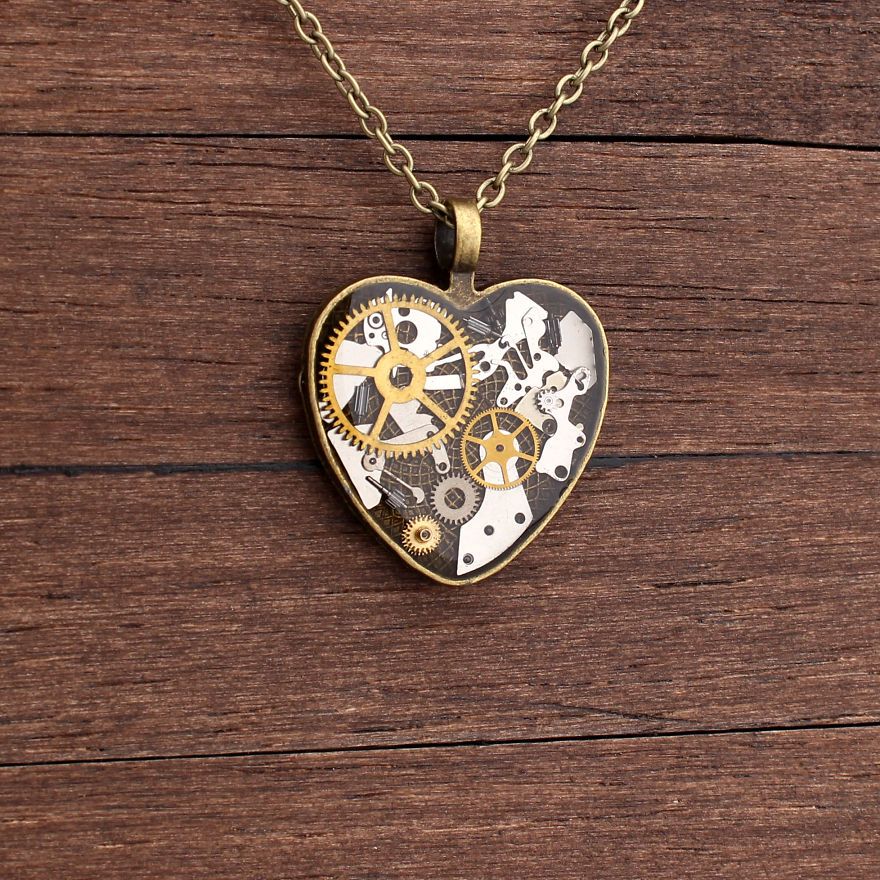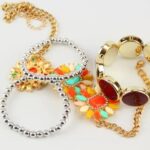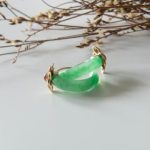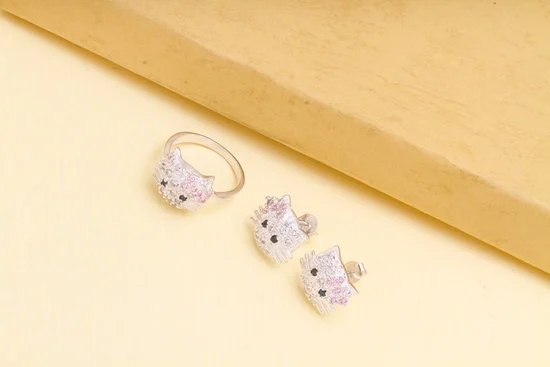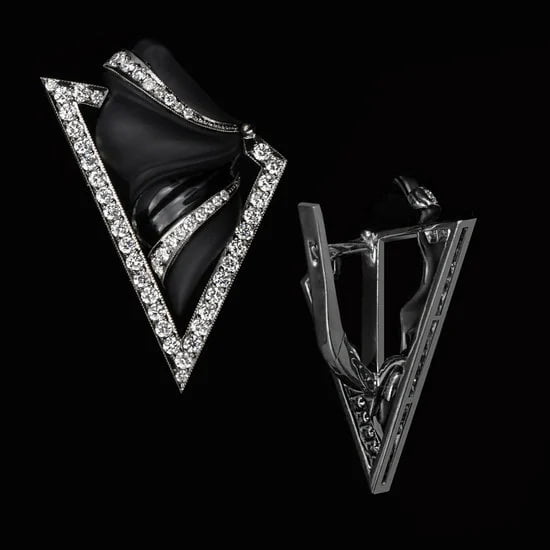A fine jewelry designer is a skilled artist who creates exquisite and unique pieces of jewelry. This introductory section will explore the definition and role of a fine jewelry designer, as well as highlight the importance and demand for this profession in the industry. Additionally, we will discuss why becoming a fine jewelry designer can be a rewarding career choice.
Fine jewelry designers are involved in every step of the creative process, from conceptualizing designs to crafting the final product. They possess a keen eye for detail, an understanding of various materials and techniques, and an ability to translate emotions and stories into wearable art. These designers play an essential role in the jewelry industry by bringing their creativity and craftsmanship to life when crafting one-of-a-kind pieces that captivate individuals.
The demand for fine jewelry designers in the industry persists as consumers seek personalized and exceptional pieces that reflect their individual style and taste. With each piece they create, these designers have the opportunity to showcase their artistic talent while fulfilling the desires of their clients. It is this combination of skill, creativity, and personalized service that makes being a fine jewelry designer such a rewarding career choice.
Becoming a fine jewelry designer allows individuals to blend their passion for artistry with their love for beautiful craftsmanship. It offers an outlet for creativity while providing opportunities to bring joy to others through wearable works of art.
Whether you aspire to work with traditional materials like gold and diamonds or experiment with alternative materials, pursuing a career as a fine jewelry designer can lead you down an exciting path full of endless possibilities. So let’s delve deeper into how you can embark on this journey towards becoming a skilled fine jewelry designer.
Developing a Passion for Fine Jewelry
Developing a passion for fine jewelry is an essential step towards becoming a successful fine jewelry designer. A true love for the craft fuels creativity, innovation, and dedication in the industry. In this section, we will explore how individuals can discover and cultivate their love for jewelry, appreciate different forms of fine jewelry, and ultimately develop a strong passion for the craft.
One of the first steps in developing a passion for fine jewelry is discovering and exploring your love for it. This can be done by visiting local jewelry stores, attending exhibitions or trade shows, and immersing oneself in the world of jewelry design. By examining different types of designs, materials used, and craftsmanship techniques employed by skilled designers, one can begin to appreciate the intricacy and beauty of fine jewelry.
Appreciating different forms of fine jewelry and design elements is another aspect to focus on when developing a passion for this field. Fine jewelry comes in various forms such as rings, necklaces, earrings, bracelets, and more. Each piece carries its own unique style, meaning, and design elements that contribute to its overall aesthetic appeal. By studying these elements – such as color palettes, shapes, textures – one can begin to gain an understanding of what makes each piece special and captivating.
| Benefits | Tips |
|---|---|
| – Fuel creativity | – Visit local jewelry stores |
| – Foster innovation | – Attend exhibitions or trade shows |
| – Enhance dedication | – Immerse oneself in the world of jewelry design |
Lastly, cultivating a strong passion for fine jewelry requires continuous exploration and engagement with the craft. This can be done by staying up-to-date with industry trends, following influential designers, and participating in workshops or classes. By actively seeking opportunities to learn and grow, individuals can further develop their passion for fine jewelry and gain valuable insights that will shape their future as jewelry designers.
Building a Foundation
When it comes to becoming a fine jewelry designer, one of the most essential steps is building a strong foundation through education and training. While there are some successful designers who have learned through trial and error or self-teaching, pursuing a formal education in jewelry design can provide valuable knowledge and skills that will set you apart in the industry.
One option for education is enrolling in a jewelry design program or school. These programs offer comprehensive courses that cover all aspects of jewelry design, including technical skills, gemology, design theory, and business fundamentals. It is important to research and choose a program that fits your specific goals and preferences. Look for programs that have experienced instructors with industry connections and access to state-of-the-art equipment and technology.
In addition to formal education, gaining hands-on experience through internships or apprenticeships is crucial in developing practical skills and building your network within the industry. Many jewelry designers gain valuable insights from working under established professionals or even by volunteering at local jewelers’ studios. These experiences not only enhance technical abilities but also provide invaluable guidance on the day-to-day operations of running a jewelry business.
| Educational Institution | Location | Program Offered | Duration |
|---|---|---|---|
| Jewelry Arts Institute | New York City, New York | Master Jewelry Program | 2 years |
| Gemological Institute of America (GIA) | Carlsbad, California; New York City, New York | Jewelry Design & Technology Program | 6 months – 1 year |
| Savannah College of Art and Design (SCAD) | Savannah, Georgia; Atlanta, Georgia | BFA/MFA in Jewelry | 4 years (BFA), 2 years (MFA) |
Investing time and effort into your education and training as a fine jewelry designer lays the groundwork for a successful career. Not only will it provide you with the necessary skills to bring your design visions to life, but it will also give you the confidence to navigate the industry with professionalism and expertise. Remember, learning is a lifelong journey in this field, so always strive for continuous growth and improvement.
Mastering the Basics of Jewelry Design
To become a successful fine jewelry designer, it is essential to have a strong foundation in the basics of jewelry design. This section will explore the fundamental principles that every aspiring designer should master before venturing further into their career.
First and foremost, understanding the fundamental principles of jewelry design is crucial. This includes learning about proportion, balance, symmetry, and harmony in design. Familiarize yourself with concepts such as focal points, repetition, and color theory to create visually appealing jewelry pieces.
In addition to this theoretical knowledge, it is important to have a thorough understanding of different types of metals, gemstones, and materials used in fine jewelry. Familiarize yourself with various types of metals like gold, silver, platinum, and their characteristics. Learn about gemstones such as diamonds, sapphires, rubies, emeralds etc., including their properties and quality grading.
Once you have acquired knowledge about materials used in jewelry-making, it is time to develop proficiency in designing and sketching jewelry concepts. Practice sketching different styles of necklaces, earrings, bracelets etc., exploring various shapes and forms. Refine your ability to represent three-dimensional objects on paper by studying perspective drawing techniques.
Overall becoming a master in the basics of jewelry design requires both theoretical knowledge and practical skills.
Here are some key steps
- Enroll in a reputable jewelry design program or school that offers comprehensive courses covering the foundational elements.
- Obtain hands-on experience through internships or apprenticeships with established jewelers or designers who can guide you through the process.
- Continue refining your skills by practicing designing and sketching regularly.
- Invest time in researching and experimenting with different materials
Mastering these fundamentals will lay the groundwork for your future success as a fine jewelry designer. With a solid understanding of jewelry design principles, you will be able to create stunning and unique pieces that capture the attention and admiration of others.
Creating a Distinguished Design Style
As a fine jewelry designer, one of the most crucial aspects of your career is honing and cultivating a distinguished design style. Your unique aesthetic will set you apart from other designers and help you establish a recognizable brand identity. Here are some steps to guide you in creating a distinguished design style:
- Discover and Hone Your Unique Design Aesthetic: Start by exploring various styles, themes, and inspiration sources to discover what resonates with you on a personal level. Consider your own preferences, experiences, and cultural background as potential sources of inspiration. Experiment with different design elements such as shape, color, texture, and composition to develop a signature look that is distinctively yours.
- Experiment with Styles and Themes: Don’t be afraid to step outside your comfort zone and try new things. Experimentation is key to finding your unique design style. Explore different eras in jewelry history or draw inspiration from nature, architecture, or art movements. Incorporate these influences into your designs while infusing them with your own creative flair.
- Incorporate Personal Storytelling and Cultural Influences: Infuse your designs with personal storytelling by incorporating sentimental elements or symbols meaningful to you or your clients. Embrace cultural influences that resonate with you, celebrating diversity through your work. This not only adds depth to your designs but also creates connections with customers who share similar backgrounds or interests.
Remember that creating a distinguished design style takes time and exploration. Don’t rush the process; allow yourself the freedom to evolve as an artist while staying true to your vision. Embrace the journey of self-discovery and let it shine through in every piece you create.
To showcase your distinguished design style, consider building an impressive portfolio that reflects the essence of your work:
- Include high-quality photographs of your jewelry pieces from multiple angles.
- Provide detailed descriptions for each piece, highlighting the unique features and inspirations.
- Consider adding sketches or design concept boards to give potential clients or employers a glimpse into your creative process.
- Update your portfolio regularly with new pieces to demonstrate growth and versatility in your designs.
In addition to maintaining a portfolio, consider leveraging various platforms to showcase your work. Create a website where potential clients can view your collections and learn more about your brand. Utilize social media platforms such as Instagram and Pinterest to reach a wider audience and engage with fans of your work.
While building a distinguished design style is essential, it’s equally important to continually push yourself creatively and stay updated on industry trends. Embrace opportunities for collaboration, attend industry events, and connect with other designers to keep growing and expanding your horizons as a fine jewelry designer.
Acquiring Technical Skills and Techniques
To become a successful fine jewelry designer, it is crucial to acquire the necessary technical skills and techniques. This section will delve into various aspects of technical expertise that are essential in the field of jewelry design.
Learning Traditional Jewelry-Making Techniques
One of the key aspects of acquiring technical skills as a fine jewelry designer is learning traditional jewelry-making techniques. These techniques include soldering, stone setting, polishing, engraving, and chain-making. Understanding these techniques allows designers to bring their designs to life by working with different metals and materials.
Many professional schools and programs offer courses specifically focused on teaching traditional jewelry-making techniques. Through hands-on training and workshops, aspiring designers can learn how to manipulate metals, set gemstones securely, create intricate patterns, and ultimately transform their sketches into actual pieces of wearable art.
Embracing Technology and CAD Software
In recent years, technology has revolutionized the field of jewelry design. Computer-Aided Design (CAD) software allows designers to create detailed 3D models of their designs before they are physically made. This technology enables greater precision in designing complex pieces and makes it easier to communicate ideas with clients or manufacturers.
Fine jewelry designers can benefit from embracing CAD software as part of their technical skillset. Learning how to use these tools opens up new possibilities for creativity while also enhancing efficiency in the design process. Taking classes or workshops focused on CAD software can help aspiring designers become familiar with the programs commonly used in the industry.
Refining Skills through Practice and Continuous Learning
Acquiring technical skills and techniques as a fine jewelry designer is an ongoing process that requires practice and continuous learning. Once you have learned the basics, it is important to continue refining your skills through experimentation and exploration.
Practice not only helps improve your proficiency in executing techniques but also allows you to develop your own unique style and explore new design possibilities. Consider dedicating time to regularly creating new pieces, whether for personal projects or as part of your portfolio. Additionally, staying up-to-date with industry trends and attending workshops or seminars will help you stay current and push the boundaries of your craft.
Building a Portfolio and Showcasing Your Work
As a fine jewelry designer, having a strong and visually compelling portfolio is essential to showcasing your skills, creativity, and unique design aesthetic. A well-crafted portfolio not only demonstrates your proficiency in jewelry design but also serves as a powerful tool for attracting potential clients, galleries, or employers. Here are some key steps to building an impressive jewelry design portfolio.
Firstly, curate a collection of your best work that represents your design style and capabilities. Include a variety of pieces that showcase your versatility in terms of materials used, techniques employed, and design aesthetics. Your portfolio should encompass different types of jewelry such as rings, necklaces, earrings, bracelets, and more. It should also highlight various themes or collections you have created to demonstrate the range of your artistic vision.
Next, focus on presentation by ensuring that your portfolio is visually appealing and well-organized. Consider using high-quality photographs that accurately capture the details and craftsmanship of each piece. Pay attention to lighting, angles, and composition to create professional-looking images. Additionally, provide clear descriptions for each piece including the materials used, techniques employed, inspiration sources, and any innovative elements incorporated.
In today’s digital age, it is crucial to have an online presence for showcasing your work. Create a website or utilize social media platforms specifically tailored for artists and designers such as Behance or Instagram. These platforms allow you to showcase your jewelry designs visually while providing easy accessibility for potential clients or collaborators who may be browsing online.
In addition to online platforms, consider participating in exhibitions, competitions, or collaborations within the jewelry industry to gain exposure for your work. These opportunities allow you to connect with fellow designers as well as industry professionals who may be interested in featuring or promoting your designs.
Remember that building a strong portfolio is an ongoing process as you continue refining your skills and creating new designs. Regularly update and refresh your portfolio by replacing older pieces with your latest creations. Embrace feedback and constructive criticism to continually improve your work and design approach.
A well-curated and visually captivating portfolio is an essential tool for success as a fine jewelry designer. By putting in the effort to create an impressive portfolio, you are effectively showcasing your talent and attracting potential clients or employers who will appreciate your unique style and craftsmanship.
Finding Job Opportunities and Networking
Exploring career paths and job prospects for fine jewelry designers
Once you have developed your skills and built a strong portfolio, it’s time to explore the various career paths and job prospects available for fine jewelry designers. The jewelry industry offers a wide range of opportunities, from working for established jewelry brands to freelance design work or even starting your own business.
Research different companies and brands that align with your design aesthetic and values to find potential job opportunities. Many jewelry designers start their careers by working as design assistants or apprentices to gain valuable experience before branching out on their own.
Building professional relationships with industry experts, suppliers, and retailers
Networking is a crucial aspect of finding job opportunities in the jewelry industry. Attend industry events such as trade shows, exhibitions, and conferences to meet fellow jewelry professionals, industry experts, suppliers, and retailers.
These events provide an excellent platform for showcasing your work, making connections, and staying updated on the latest trends in the field. Additionally, joining professional organizations like the Jewelry Designer Society or participating in online forums can help you connect with other designers and gain valuable insights into the industry.
Utilizing online platforms, industry events, and organizations for networking opportunities
In today’s digital age, online platforms play a significant role in networking for job opportunities as a fine jewelry designer. Utilize social media platforms like Instagram and LinkedIn to showcase your work and connect with potential employers or clients.
Building a strong online presence through consistent posting of high-quality content can attract attention from industry professionals. Another avenue for networking is through attending trade fairs and markets specific to the jewelry industry where you can make connections with buyers, retailers, and potential collaborators.
By utilizing these networking strategies effectively while also continuing to refine your skills through continuous learning experiences will help pave the way towards finding job opportunities as a fine jewelry designer. Networking is not only about finding immediate job prospects but also about building long-term relationships that can lead to future collaborations and opportunities.
Launching Your Own Jewelry Line or Business
Starting your own fine jewelry brand or business can be an exciting and fulfilling next step in your journey as a fine jewelry designer. It allows you to showcase your unique designs, creativity, and craftsmanship while building a brand that reflects your vision and values. Here are the key steps to consider when launching your own jewelry line or business.
The first step in launching your own jewelry line is to establish a clear brand identity. This involves defining what sets your designs apart from others in the market, whether it’s a specific style, use of materials, or a unique storytelling approach. Your brand identity should also reflect your target audience and what appeals to them. Consider conducting market research to understand current trends, consumer preferences, and potential opportunities for your brand.
Once you have established your brand identity, it’s crucial to focus on marketing and promoting your jewelry line effectively. Utilize various channels such as social media platforms, a website, an online store, or even physical retail spaces to showcase and sell your designs. Create captivating visuals through high-quality photography and compelling storytelling to engage potential customers. Collaborate with influencers or fashion bloggers who align with your brand aesthetic for additional exposure.
Networking is another essential aspect of launching a successful jewelry line or business. Attend industry events like trade shows, exhibitions, and conferences to meet potential clients, suppliers, retailers, and other professionals in the field. Building relationships with industry experts can provide valuable insights and opportunities for collaboration or mentorship.
Finally, remember that launching your own jewelry line is an ongoing process that requires dedication and continuous learning. Stay up-to-date with industry trends, new techniques or technology advancements in jewelry design. Regularly assess customer feedback on your designs and adapt accordingly to meet their evolving needs. Embrace challenges as learning opportunities and remain open-minded throughout this exciting entrepreneurial journey.
Launching your own fine jewelry line or business can be both challenging and rewarding. By following these steps, you can establish a brand that reflects your unique design style and captivates the hearts of your target audience. With passion, dedication, and creativity, you can pave your own path as a successful fine jewelry designer.
Conclusion
In conclusion, becoming a fine jewelry designer is a rewarding and fulfilling career choice for those with a passion for creativity and craftsmanship. Throughout this article, we have explored the various steps and tips to embark on this journey and establish oneself in the industry.
Firstly, it is important to develop a deep passion for fine jewelry by exploring different forms of jewelry and design elements. By cultivating this passion, one can find their unique style and aesthetic, which will set them apart as a designer.
Education and training play a crucial role in building the foundation of a successful career as a fine jewelry designer. Pursuing formal education in jewelry design enables individuals to learn the fundamental principles of design, understand different materials used in the industry, and develop skills through hands-on experience.
Furthermore, acquiring technical skills through traditional techniques like soldering and stone setting, as well as embracing technology and CAD software for designing and 3D modeling, are essential in staying relevant in today’s ever-evolving industry.
Building a strong portfolio that showcases your best work is vital in attracting potential clients or employers. Choosing the right platform to display your work – whether it be through a website or social media – can help gain exposure. Additionally, networking with industry experts, attending events, participating in exhibitions or collaborations can open doors for job opportunities.
Ultimately, becoming a successful fine jewelry designer requires continuous learning, dedication to honing your craft, pushing boundaries creatively, and staying passionate throughout the journey. By following these steps outlined above and embracing the challenges that come along with it, aspiring designers can embark on an exciting career path filled with possibilities.
So go ahead – embrace the journey of becoming a fine jewelry designer. Let your creativity shine through your designs while never ceasing to learn and grow within this fascinating industry. With passion, dedication, perseverance – there is no limit to what you can achieve.
Frequently Asked Questions
What qualifications do I need to be a jewellery designer?
To become a jewellery designer, there are several qualifications that can be beneficial to have. First and foremost, a strong foundation in design is crucial. This may involve earning a degree in jewelry design or a related field such as fine arts or fashion design.
This education helps develop the necessary skills in sketching, rendering, and understanding materials and techniques. Additionally, having knowledge of gemstones and their properties is important for creating aesthetically pleasing designs that showcase the beauty of the stones. Many designers also gain experience through internships or apprenticeships with established jewellery designers or companies.
How much do luxury jewelry designers make?
The salary range for luxury jewellery designers can vary greatly depending on several factors such as experience, skill level, reputation, and the market demand for their designs. In general, luxury jewellery designers have the potential to earn significant incomes due to the exclusive nature of their work.
While there is no specific average salary for luxury jewellery designers, it is not uncommon for successful designers to make six-figure or even seven-figure incomes annually. However, it’s important to note that achieving this level of income often takes time and dedication to establish a recognizable brand and clientele.
How long does it take to become a jewelry designer?
The length of time it takes to become a jewellery designer can vary depending on individual circumstances and career goals. Some aspiring designers choose to pursue a formal education by earning a bachelor’s degree in jewelry design or a related field, which generally takes around four years of full-time study.
Others may opt for more specialized short-term programs or apprenticeships that focus specifically on jewelry design techniques and skills development but typically take less time to complete.

Welcome to my jewelry blog! My name is Sarah and I am the owner of this blog.
I love making jewelry and sharing my creations with others.
So whether you’re someone who loves wearing jewelry yourself or simply enjoys learning about it, be sure to check out my blog for insightful posts on everything related to this exciting topic!

